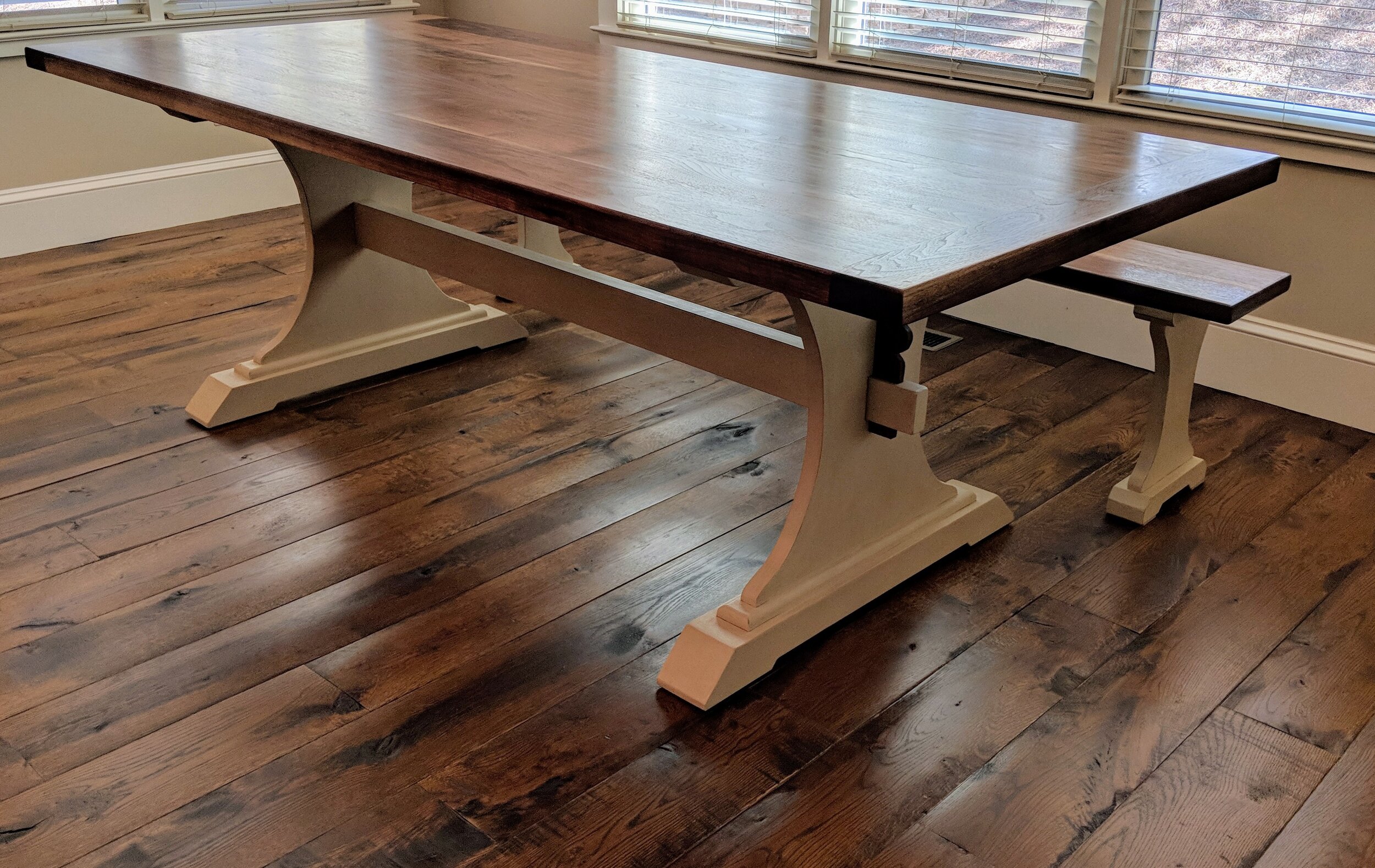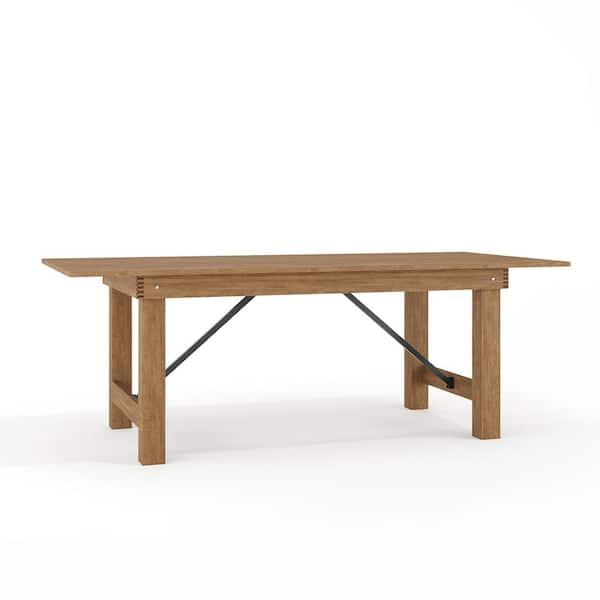Discover Classic Charm in Handcrafted Dining Table Legs Wood Selections
Discover Classic Charm in Handcrafted Dining Table Legs Wood Selections
Blog Article
Discovering the Various Sorts Of Table Legs Wood for Your Dining Room
The option of table legs wood can exceptionally impact both the visual and useful high qualities of your eating area. Solid timber options, such as oak and walnut, supply a classic appearance with unequaled toughness, while engineered timber alternatives supply ingenious layouts that imitate the splendor of natural grains. In addition, the growing pattern of reclaimed timber presents a sustainable component that appeals to eco conscious customers. As we discover these various choices, it becomes necessary to consider not only the aesthetic appeal however additionally the useful effects of each material option. What elements should assist your decision?
Strong Timber Options

Furthermore, strong timber is renowned for its stamina and durability. Unlike crafted products, strong timber is less prone to warping and damages gradually when properly maintained. This makes it an excellent choice for households or those that regularly organize gatherings. Each piece of solid wood is special, showcasing specific features that include in the beauty and personality of the dining table.
Furthermore, solid wood can be completed in various methods, ranging from natural oils to discolored surfaces, enabling property owners to customize their furniture to match their decoration. In summary, choosing strong timber for eating table legs not only makes sure structural integrity but likewise enhances the visual charm of the dining area, making it a beneficial investment for any home.
Engineered Wood Alternatives

Plywood, constructed from numerous layers of timber veneer, is particularly solid and secure, making it an exceptional choice for eating table legs. Its layered composition permits it to endure changes in moisture and temperature much better than conventional solid timber. MDF, on the other hand, offers a smooth surface area for painting or veneering, allowing designers to attain a polished appearance while maintaining structural stability.
Particleboard, typically used in economical choices, gives suitable stamina and is light-weight, making it simpler to take care of. It might not be as durable as plywood or MDF. It is necessary to consider the designated usage and desired aesthetic when picking engineered wood choices. These products not only boost the functionality of dining rooms however additionally allow for greater style adaptability, guaranteeing that contemporary and conventional designs can coexist harmoniously.
Reclaimed Wood Features
Reclaimed timber supplies an unique mix of sustainability and personality, making it a significantly preferred selection for eating table legs. Sourced from old barns, manufacturing facilities, and other structures, reclaimed wood personifies a background that brand-new materials just can not duplicate. Each piece carries its very own tale, marked by unique blemishes, knots, and varying grain patterns, which add to a table's distinct aesthetic allure.
In enhancement to its visual charm, recovered timber is an ecologically pleasant alternative. By repurposing formerly utilized materials, it decreases the demand for new lumber, thus helping to decrease and conserve woodlands waste. This straightens with an expanding consumer preference for sustainable techniques in decor.
Furthermore, recovered wood is frequently a lot more durable than recently gathered wood due to its age. The natural drying out procedure that reclaimed wood undergoes cause a denser and more powerful product, check my blog making it less at risk to warping and splitting. This boosts the long life of eating tables, enabling them to stand up to the roughness of day-to-day use.
Softwood vs. Hardwood
When choosing eating table legs, understanding the distinctions between softwood and hardwood is essential for accomplishing both functional and visual objectives. Softwoods, stemmed from coniferous trees, such as yearn and cedar, are characterized by pop over to this site their lighter weight and simplicity of adjustment. They commonly exhibit an even more rustic look, making them suitable for informal or country-style dining rooms. Nonetheless, softwoods are normally less resilient than hardwoods, which can be a consideration for households or those looking for durability in their furnishings.
On the various other hand, hardwoods, sourced from deciduous trees like cherry, oak, and maple, are renowned for their thickness, toughness, and resilience. The intricate grain patterns and abundant colors of woods give a classic and sophisticated allure, making them ideal for official dining settings. While woods have a tendency to be a lot more expensive and larger, their resilience versus damage frequently validates the financial investment.
Ultimately, the choice in between softwood and hardwood for eating table legs ought to straighten with your layout vision, use needs, and budget, making certain that your eating space reflects your personal style while continuing to be useful in time.

Coatings and Therapies
The visual allure and longevity of eating table legs can be substantially enhanced via various finishes and therapies. These procedures not just shield the wood from damage but likewise elevate its look, permitting it to complement diverse interior designs.
One usual therapy is tarnishing, which passes through the timber and enhances its all-natural grain while adding shade. Spots give a rich, classy look, allowing homeowners to match their furnishings with existing design. Conversely, clear surfaces such as polyurethane or varnish produce a protective layer without modifying the wood's initial shade, guaranteeing toughness versus deterioration.
Furthermore, all-natural oils, like tung or linseed oil, nourish the timber and supply a subtle shine, all while being environment-friendly. These oils enable the surface to take a breath, stopping dampness accumulation and potential bending.
For those looking for a rustic appeal, troubled or weathered coatings can be applied to produce an aged look, adding character to the item. Eventually, the choice of coatings and therapies relies on personal preference, wanted appearances, and the details wood type, making it vital to think about these factors when choosing eating table legs for your area.
Final Thought
Solid woods, crafted alternatives, and redeemed choices each deal unique benefits, catering to different choices and needs. Inevitably, the option of timber kind should align with preferred design, longevity, and ecological factors to consider, enhancing the overall dining experience.
The choice of eating table legs wood can greatly impact both the aesthetic and functional important site high qualities of your dining space - Dining Table Legs Wood. Solid wood choices, such as oak and walnut, offer a timeless look with unrivaled resilience, while crafted wood options provide cutting-edge styles that mimic the splendor of all-natural grains. Solid wood uses a classic high quality that can boost the general layout of a dining area. Each piece of solid wood is unique, showcasing specific characteristics that include to the beauty and personality of the eating table
Additionally, redeemed wood is often more sturdy than newly gathered timber due to its age.
Report this page